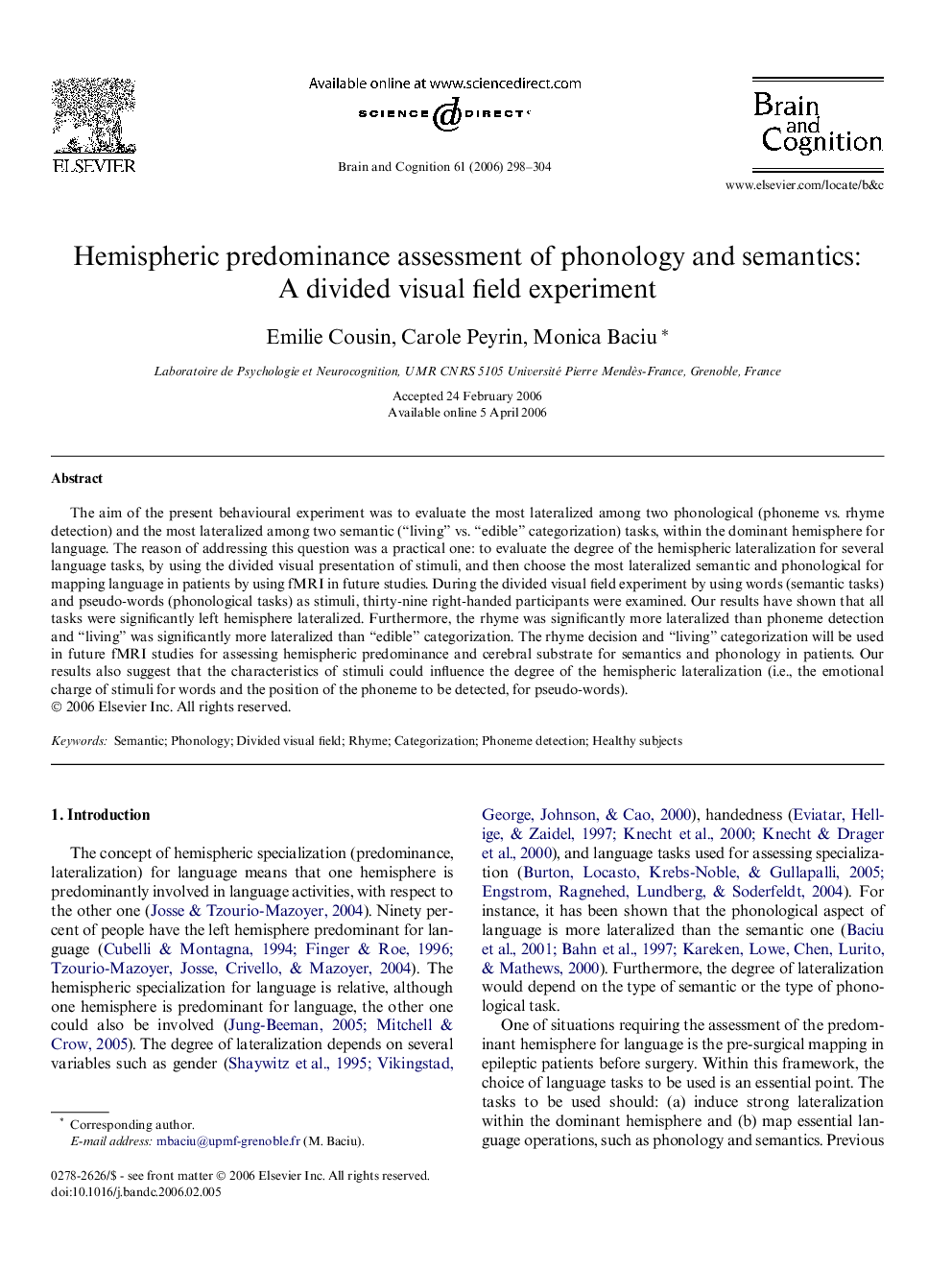| Article ID | Journal | Published Year | Pages | File Type |
|---|---|---|---|---|
| 925162 | Brain and Cognition | 2006 | 7 Pages |
The aim of the present behavioural experiment was to evaluate the most lateralized among two phonological (phoneme vs. rhyme detection) and the most lateralized among two semantic (“living” vs. “edible” categorization) tasks, within the dominant hemisphere for language. The reason of addressing this question was a practical one: to evaluate the degree of the hemispheric lateralization for several language tasks, by using the divided visual presentation of stimuli, and then choose the most lateralized semantic and phonological for mapping language in patients by using fMRI in future studies. During the divided visual field experiment by using words (semantic tasks) and pseudo-words (phonological tasks) as stimuli, thirty-nine right-handed participants were examined. Our results have shown that all tasks were significantly left hemisphere lateralized. Furthermore, the rhyme was significantly more lateralized than phoneme detection and “living” was significantly more lateralized than “edible” categorization. The rhyme decision and “living” categorization will be used in future fMRI studies for assessing hemispheric predominance and cerebral substrate for semantics and phonology in patients. Our results also suggest that the characteristics of stimuli could influence the degree of the hemispheric lateralization (i.e., the emotional charge of stimuli for words and the position of the phoneme to be detected, for pseudo-words).
